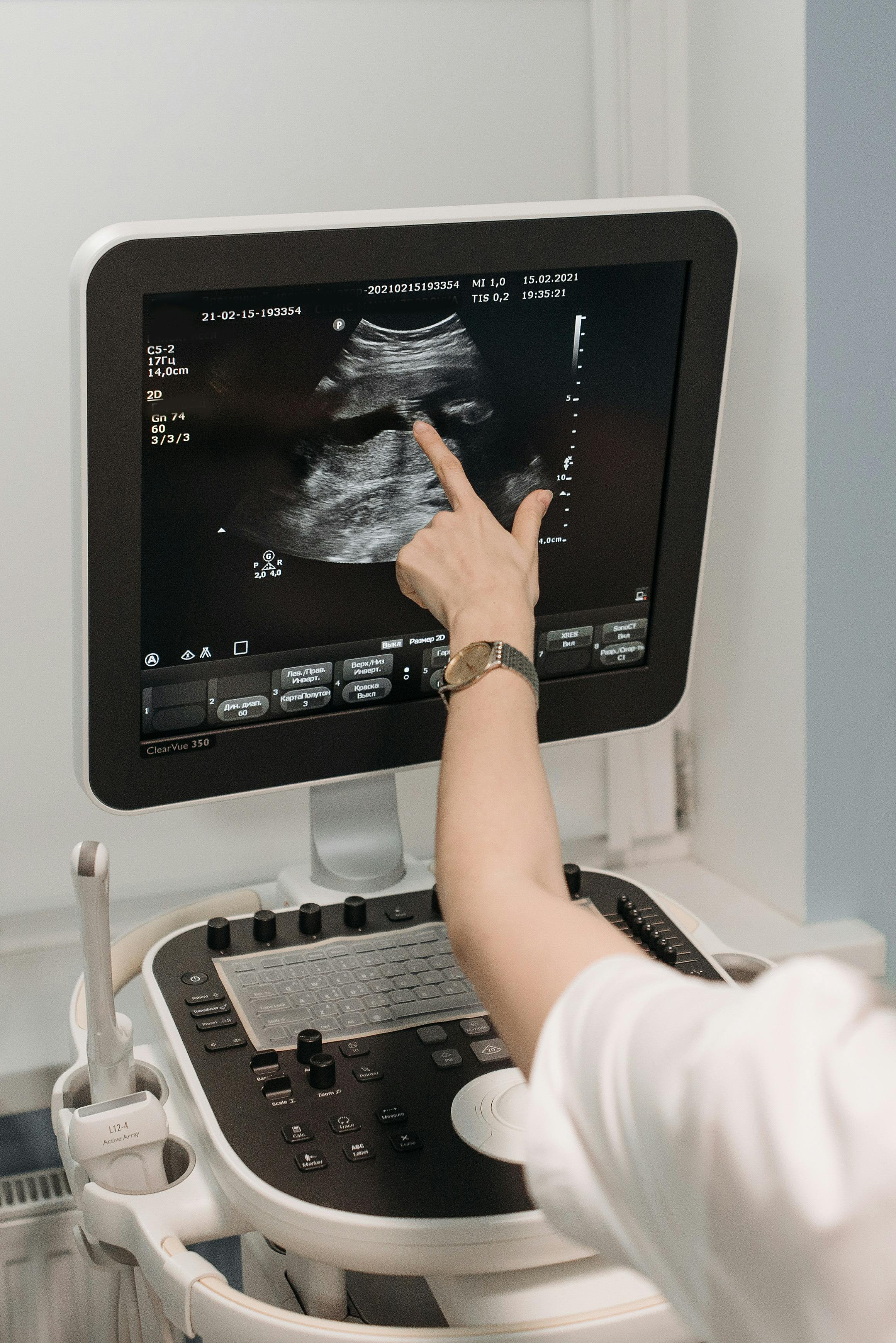 About
About
Early pregnancy ultrasound often feels like stepping into the unknown. You wonder what sonograms will reveal at each pregnancy stage and how to read those ultrasound images. This guide breaks down what to see in sonograms and explains the different sonogram types, helping you feel more confident about prenatal care and your first look at baby. For more detailed information on ultrasounds during pregnancy, you can visit this helpful resource from the Mayo Clinic.
Understanding Early Pregnancy Ultrasound
Sonograms open a window to your growing baby. They give you and your doctor crucial information about your pregnancy's progress.
First Trimester Sonograms
Your first ultrasound is an exciting milestone. It usually happens between weeks 6 and 8 of pregnancy. During this scan, your doctor looks for the gestational sac—a small, fluid-filled bubble where your baby grows. By week 6, a tiny flickering heartbeat might be visible.
Don't worry if you can't see much yet. Your baby is still very small at this stage. The main goal is to confirm the pregnancy and its location in the uterus.
Around week 8, your baby starts looking more human-like. You might see the head and body taking shape. Your doctor will measure the baby from crown to rump to check growth.
What to See in Sonograms
As your pregnancy progresses, sonograms reveal more details about your baby's growth.
By the end of the first trimester, you might spot tiny arm and leg buds. Your baby's face is forming, with dark spots for eyes.
In the second trimester, sonograms get really exciting. You'll likely see your baby moving around. The technician can often tell you the sex if you want to know.
Key things to look for include:
- A round head
- A curved back
- Moving arms and legs
- A beating heart
Remember, every baby develops at their own pace. Your doctor will explain what they see and answer any questions you have.
Different Types of Sonograms
Not all ultrasounds are the same. Different types give doctors different views of your baby.
Transvaginal Ultrasound Images
Early in pregnancy, transvaginal ultrasounds offer the clearest pictures.
For this type, the technician uses a wand-like device. They gently insert it into the vagina. This might feel a bit uncomfortable, but it shouldn't hurt.
Transvaginal ultrasounds work well in early pregnancy because they get closer to your uterus. They can show:
- The gestational sac
- The yolk sac (which feeds your baby early on)
- The fetal pole (your baby's first visible sign)
These scans help confirm your due date and check for multiple pregnancies. They're also useful for spotting any early concerns.
Abdominal Ultrasound Insights
As your pregnancy advances, abdominal ultrasounds become more common. These are the ones you've probably seen in movies.
The technician spreads gel on your belly and moves a handheld device over it. The gel helps the sound waves travel better.
Abdominal ultrasounds give a wider view of your uterus. They're great for:
- Checking your baby's size and position
- Looking at the placenta
- Measuring amniotic fluid levels
These scans are painless and safe for both you and your baby. The American Pregnancy Association offers more information on the safety and benefits of ultrasounds during pregnancy.
The Importance of Prenatal Care
Regular check-ups, including ultrasounds, play a key role in a healthy pregnancy.
Monitoring Pregnancy Stages
Prenatal care helps track your baby's growth and your health throughout pregnancy.
Early ultrasounds confirm your due date. This is crucial for planning your care. Later scans check that your baby is growing well.
Your doctor will schedule ultrasounds at key points:
- First trimester: Confirm pregnancy and due date
- Second trimester: Check anatomy and growth
- Third trimester: Monitor position and size
Each scan gives your doctor valuable info. They use this to make sure you and your baby stay healthy.
Remember, ultrasounds are just one part of prenatal care. Your doctor will also check your weight, blood pressure, and run other tests as needed.
Guidance for Expecting Parents
Prenatal visits are your chance to ask questions and get expert advice.
Your doctor can guide you on:
- Healthy eating habits
- Safe exercise during pregnancy
- Managing common pregnancy symptoms
They'll also help you prepare for labor and delivery. Don't hesitate to bring up any concerns, no matter how small they seem.
Cleveland Clinic's guide on pregnancy ultrasounds offers more details on what to expect during these important scans.
Pregnancy is a journey filled with wonder and questions. Regular prenatal care, including ultrasounds, helps you navigate this amazing time with confidence. Remember, Materna is here to support you every step of the way.










